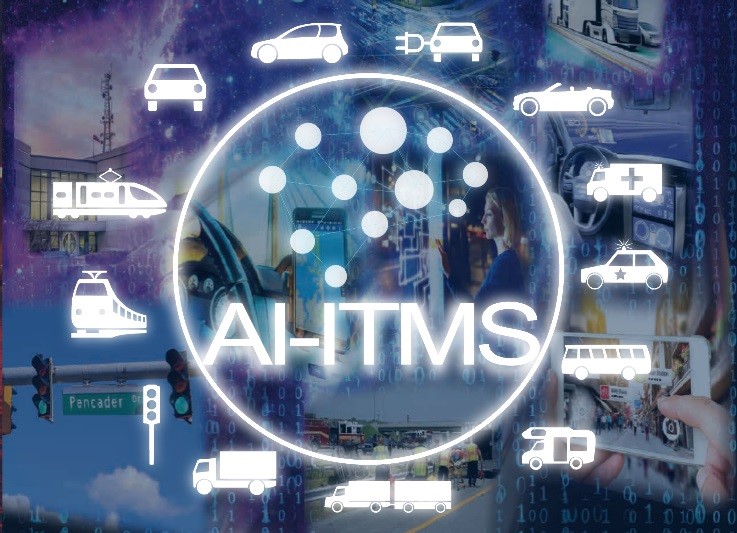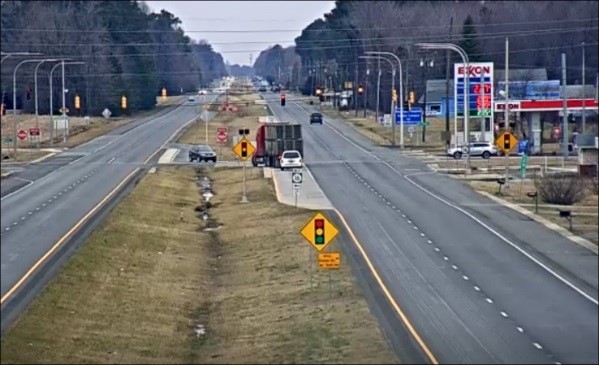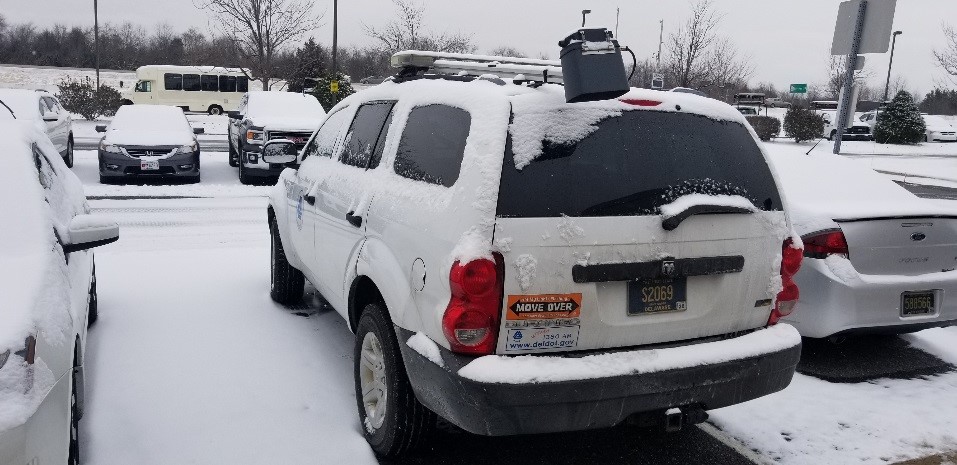Innovative Transportation Management Projects
ITMS has been built into planning, capital project development and design so that every DelDOT program and project, when appropriate, incorporates technology to enhance transportation in Delaware. As well as being a participant in DelDOT projects, the TMC runs some of its own innovative projects as well.
Interactive Map
Much of the information DelDOT gathers for transportation system management is shared with the public in real-time on the interactive map. View DelDOT’s interactive travel map to experience a real-time view of the transportation network throughout Delaware. Explore the map features by choosing map layers from the menu. For more details on each layer, click on the layer’s info icon.
Artificial Intelligence (AI-ITMS)

DelDOT was recently awarded a federal grant to deploy an artificial intelligence-based integrated transportation management system (AI-ITMS). It is an excellent example of the Federal Highway Administration’s (FHWA’s) initiative to raise awareness of artificial intelligence of transportation systems management and operations. The program integrates artificial intelligence and machine learning algorithms into DelDOT transportation management practices to automate operations to improve safety and efficiency.
The system uses an AI-based transportation operations management system (AI-TOMS) which monitors the traffic on Delaware’s roadways and automatically makes decisions to optimize performance. The program aims to work more efficiently than a human operator could by collecting data, analyzing, finding the best solution, and deploying quickly. The system will be continuously learning, as a traffic engineer would, and will automate operations through all stages of DelDOT’s transportation management: monitoring, control, and information dissemination. Through development of this system, DelDOT is setting the stage for use of AI and ML in transportation with the goal of creating a truly predictive and adaptive self-monitoring transportation management system that gets smarter over time. Operation will occur in all three counties in Delaware. Software development continues before testing and validation of the system occurs.
Transportation Operations Management Plan (TOMP)
The Transportation Operations Management Plan (TOMP) is Delaware's comprehensive, consistent statewide approach that uses integrated transportation management system (ITMS) data to understand traffic mobility across the state. This understanding is essential for the Delaware Department of Transportation (DelDOT) to ensure the state's transportation system supports safe, reliable, and multimodal travel to make Delaware a better place to live and conduct business.
Read more about the TOMP process, the data and technology behind it, and access each of the county-specific reports and associated transportation recommendations on the TOMP webpage.
Signal Phasing and Timing (SPaT) Challenge
 The SPaT Challenge is a
national initiative that challenges states to equip at least 20 signalized intersections in at least one corridor with dedicated short-range communication (DSRC) roadside equipment (RSE). DSRC is currently the primary means of communication between connected vehicles and infrastructure. Participating in the SPaT Challenge is one of the ways DelDOT is preparing for a fully connected transportation system.
The SPaT Challenge is a
national initiative that challenges states to equip at least 20 signalized intersections in at least one corridor with dedicated short-range communication (DSRC) roadside equipment (RSE). DSRC is currently the primary means of communication between connected vehicles and infrastructure. Participating in the SPaT Challenge is one of the ways DelDOT is preparing for a fully connected transportation system.
DelDOT has equipped intersections along US 13 in Smyrna, as well as intersections in Dover. Next, the department plans to install equipment at locations in the beach area. Vehicles equipped with onboard units (OBUs) are able to receive messages from the road side units (RSUs) about signal timing information creating a safer and more efficient transportation network.
Due to changes in federal regulation regarding the 5GHz bandwidth that DSRC operates on, methods beyond DSRC are being considered for vehicle-to-vehicle (V2V), vehicle-to-infrastructure (V2I), and vehicle -to-everything (V2X) communication. DelDOT is working to upgrade its existing RSUs to dual mode so that they can operate using DSRC as well as cellular communications to connect with vehicles and road users
Dilemma Zone
 The dilemma zone is the area just before a traffic signal where approaching vehicles cannot safely slow down to stop before the red light, but also cannot keep driving to make it through the intersection safely before the signal turns red. It’s a dangerous situation: either the driver must slam on their brakes to stop, or unsafely speed up to make it through.
The dilemma zone is the area just before a traffic signal where approaching vehicles cannot safely slow down to stop before the red light, but also cannot keep driving to make it through the intersection safely before the signal turns red. It’s a dangerous situation: either the driver must slam on their brakes to stop, or unsafely speed up to make it through.
This system uses high-definition radar sensors that can detect if a vehicle may be entering the dilemma zone, and automatically extends the green light while also turning on a flasher sign ahead of the intersection to warn approaching drivers.
DelDOT’s system was installed in February 2019 at the intersection of Route 113 and Route 16 in Ellendale. Plans are in place to install a second Dilemma Zone system in Smyrna, along DelDOT’s US 13 emerging technology testbed.
Mobile Weather Project
DelDOT currently collects weather information from sensors that are fixed in locations throughout Delaware. Under the federally funded Connected Vehicle-Enabled Weather Responsive Traffic Management (CV-WRTM) program, DelDOT installed mobile weather sensors on maintenance and safety vehicles and collected data during Winter 2019. DelDOT has since installed additional sensors including two on DTC paratransit vehicles which are used to report back real-time road environmental conditions. This mobile data is used in addition to the existing fixed data to better manage the transportation systems and provide information to travelers about road conditions during inclement weather.










